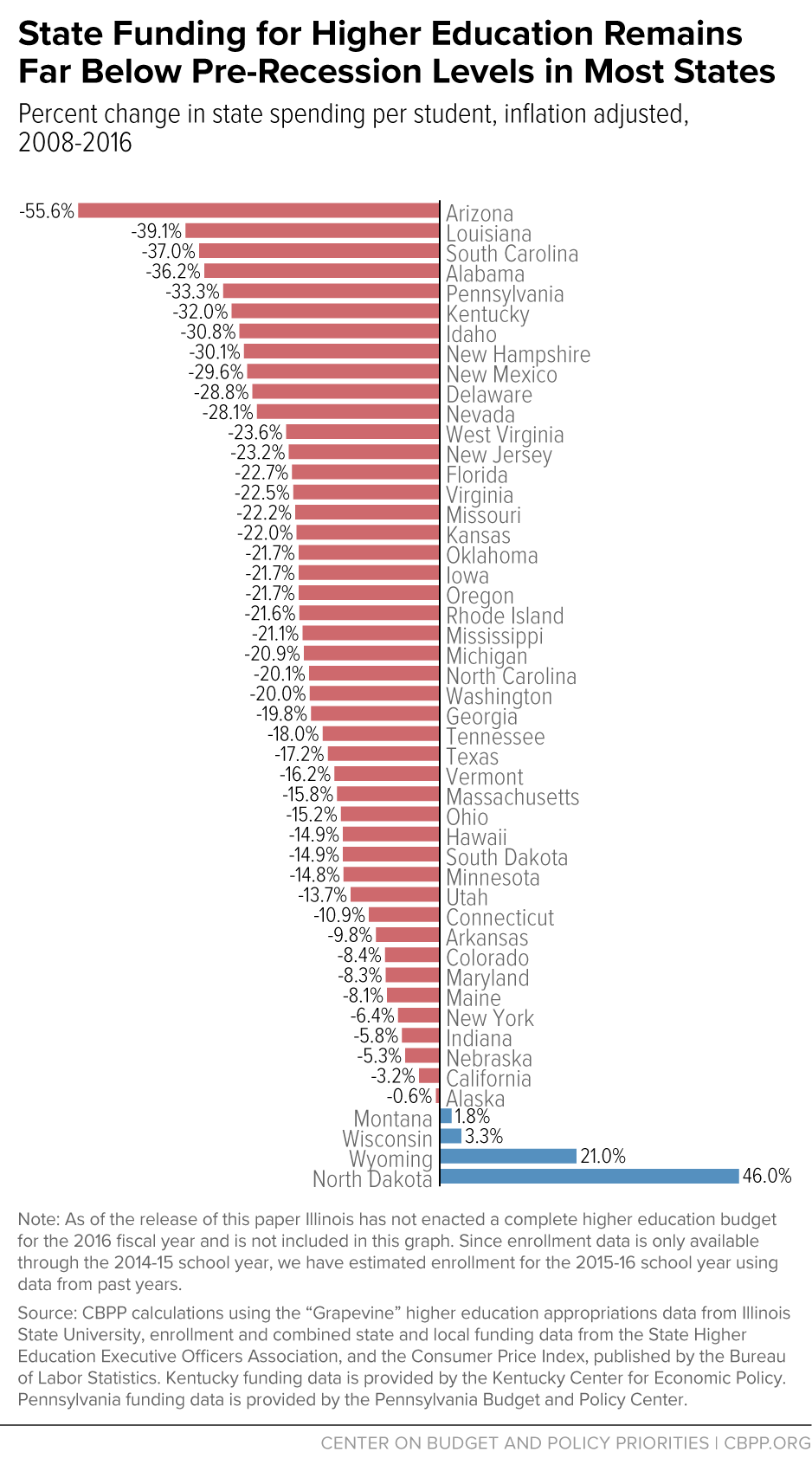The Democratic presidential primary seems likely to drag on into June, with Vermont Sen. Bernie Sanders vowing to keep campaigning “until the last ballot is cast” even though he has virtually no chance of success. That means that the cost of higher education is going to continue to be at the forefront of the discussion for Democrats, as he and frontrunner Hillary Clinton continue sparring.
Today, the Center on Budget and Policy Priorities released a study that shows one reason why calls to make higher education more affordable have been resonating. While much of the focus is on the crippling debt that many students accrue while pursuing their studies, less attention is given to one of the drivers of that debt: decreased state funding of higher education.
Related: How Clinton Could Finally Close the Door on Sanders
The CBPP report finds that all but four US states are funding higher education at levels lower than they did in 2008, before the Great Recession. Half of the 50 states have cut spending by 20 percent or more from 2008 levels, with some slashing education funding by even more.
Louisiana’s public funding of higher education is down 39.1 percent. Arizona’s is down by 55.6 percent. (The study only includes 49 of the 50 states, because Illinois has not enacted a higher education budget for this fiscal year.)
The study, by Michael Mitchell, Michael Leachman, and Kathleen Masterson, draws a direct line between funding levels and tuition hikes. “Years of cuts in state funding for public colleges and universities have driven up tuition and harmed students’ educational experiences by forcing faculty reductions, fewer course offerings, and campus closings,” they write. “These choices have made college less affordable and less accessible for students who need degrees to succeed in today’s economy.”
The authors note that the sharp cuts were, in most cases, a policy decision that involved a conscious effort to close gaps in state budgets through spending reductions only, and not through a balanced combination of increased tax revenue and spending cuts.
Related: Get Ready for a Third-Party Run from Bernie Sanders

The authors conclude by warning against what they describe as a shortsighted focus on tax cuts that could ultimately damage states’ economies in the long run.
“Tax cuts are often sold as a recipe for economic growth,” they write. “But to the extent that tax cuts prevent investments in higher education that would increase access to college, improve graduation rates, and reduce student debt, their net effect could be a drag on the economy.”





